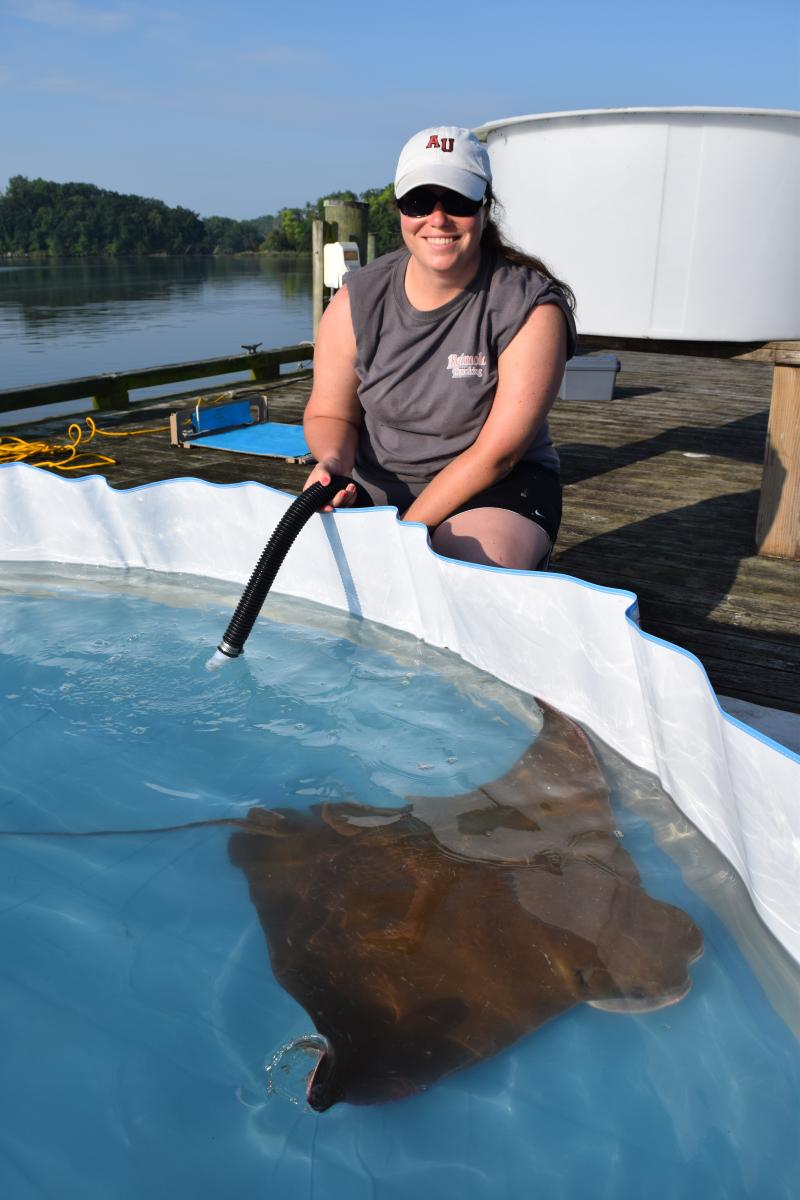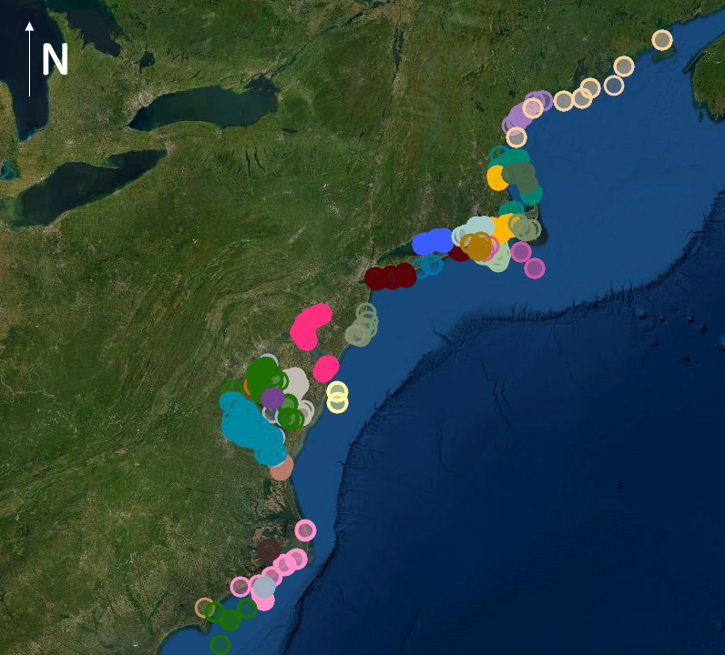Grant Helps Smithsonian Environmental Research Center Run Network Tracking Migrations Of Sharks, Rays And Other Species

SERC biologist Kim Richie watches over a oownose ray during tagging. Cownose rays are one of over 100 migratory species scientists are tracking as part of the Atlantic Cooperative Telemetry network, which SERC manages. (Credit: SERC)
The Smithsonian's work tracking tagged marine animals, like sharks and rays, has received a major boost thanks to a new award covering several coastal research organizations across the Mid-Atlantic. The award includes funds for the Smithsonian Environmental Research Center (SERC) to continue leading the Atlantic Cooperative Telemetry (ACT) Network, a network that allows scientists to follow tagged animals along the Atlantic Coast.
The 5-year award, amounting to roughly $4.9 million in its first year, is part of a cooperative agreement between the Mid-Atlantic Regional Association Coastal Ocean Observing System (MARACOOS) and the U.S. Integrated Ocean Observing System (IOOS®). MARACOOS is a regional association of partners that collect ocean, coastal and estuarine data. The network stretches from Cape Cod, Massachusetts, to Hatteras, North Carolina. Approximately $69,500 of the first-year funds will help SERC biologists Matt Ogburn and Kim Richie manage the ACT Network, with more funds anticipated over the next four years.
Scientists in the ACT Network tag animals with special "acoustic telemetry" tags that emit high-frequency pings. But researchers can only get data on an animal's location if it swims within half a kilometer of a receiver. The ACT network allows the hundreds of receivers different scientists have put in place along the Atlantic to share data.
"Acoustic telemetry researchers tag their study animals, like the cownose rays, sharks, and striped bass we are studying at SERC, and hope what we learn about their migrations helps us sustain productive fisheries and protect endangered species,” said Ogburn, senior scientist with SERC's Fisheries Conservation Lab and member of the Smithsonian’s Movement of Life Initiative. But to get the tracking data, we rely on researchers who are members of the ACT Network to detect those tags at hundreds of locations using acoustic receivers.”
To date, scientists at 79 different organizations tap into the ACT Network. They have tagged over 100 different species and over 19,000 individual animals.

Map of receivers in the ACT network that can detect tagged animals that swim nearby, from Maine to North Carolina. Different colored dots indicate different receiver arrays.
The new funds are awarded through a competitive process that includes funds from U.S. IOOS along with NOAA’s National Ocean Service, Office of Oceanic and Atmospheric Research, National Weather Service, NOAA Fisheries, Office of Marine and Aviation Operations; the U.S. Geological Survey; and the Environmental Protection Agency.
“This award is critically important to the Mid-Atlantic and stands as a testament to the local and regional partners who provide the quality data and predictions that our communities rely on,” said Dr. Gerhard Kuska, MARACOOS Executive Director.
Driven by stakeholders and its strategic plan, MARACOOS will focus on five key areas: coastal hazards, water quality, maritime commerce and safety, fisheries and natural resources, and energy, including the rapidly changing offshore wind sector. The award will emphasize partnerships, expand the delivery of user tools, enhance infrastructure, and expand the observing network and platforms.
